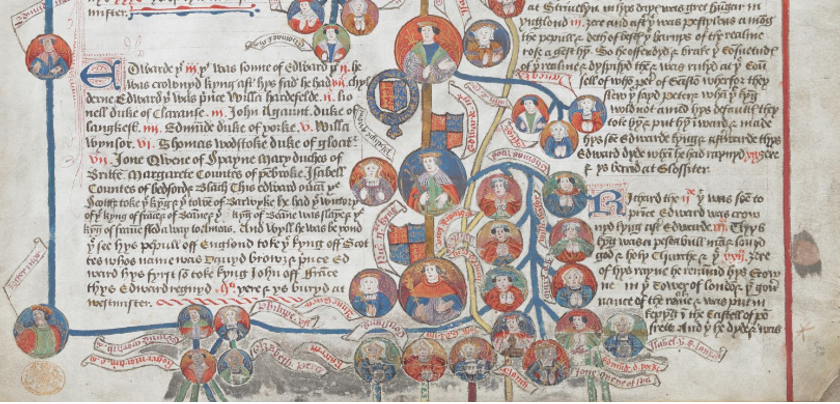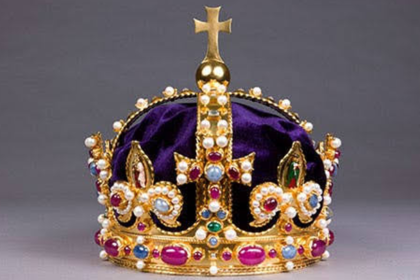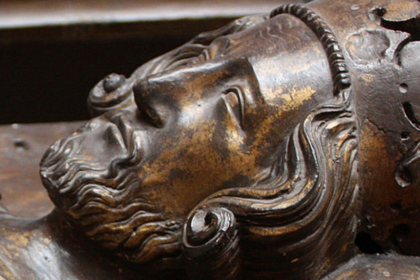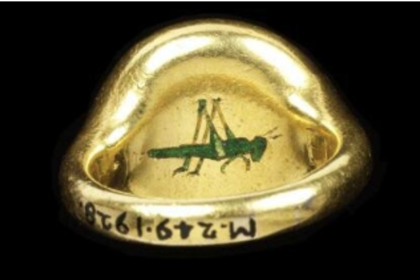Just like today, people in the medieval and early modern periods were fascinated by their genealogies, especially kings and noblemen. Henry VIII possessed a particularly interesting genealogy, catalogued as Kings MS 395 and which can be viewed via the British Library website, that traces a genealogy from Adam and Eve down to Edward VI.
It was originally created at some point between Mary’s birth in 1516, and around 1526 – an item displaying Katherine of Aragon and Mary’s positions as the legitimate wife and daughter of the King would hardly have won favour with Henry when he was actively seeking an annulment. It celebrates the ancestry and descent of the kings of England. Who it was commissioned by and why is unknown; perhaps it was created in 1519 to celebrate the tenth anniversary of Henry’s reign.
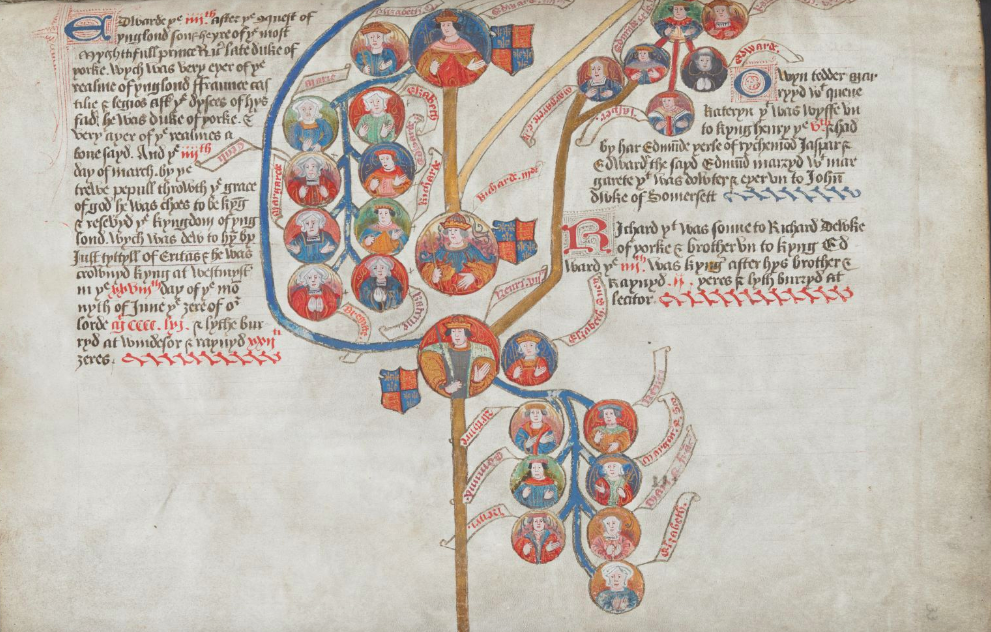
The genealogy weaves biblical, mythological, and historical figures into a rich tapestry to create a divine bloodline for the kings of England. The first part of the genealogy is a translation of Peter of Poitiers’ ‘Compendium historiae in genealogia Christi,’ beginning with Adam and Eve, tracing a biblical descent down through to Christ. There is also a parallel descent from a son of Noah through to Woden, Brutus, and the emperors of Rome. Utherpendragon is shown as a Roman king of England. The separate lines of the Anglo-Saxon Heptarchy are shown, before reuniting in Ecgberht, king of Wessex. From there, the descent shows the relatively simple path down through to William the Conqueror, at which point the genealogy shows more detail in terms of marriages and offspring.
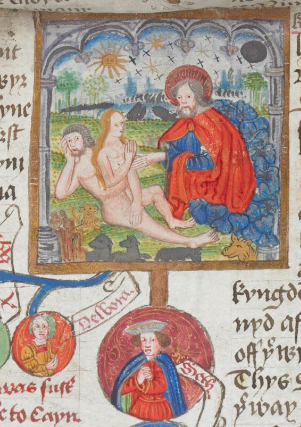
Originally, the genealogy ended with Henry VIII’s marriage to Katherine of Aragon, and their children, Henry of Cornwall and Mary. Henry VIII’s subsequent wives and children were added at a later date by a different artist. The identities of both artists is unknown, but there is a distinct stylistic difference between them; it may not be fair to compare the artistic abilities of each artist; the original artist had a much bigger task to complete than the second.
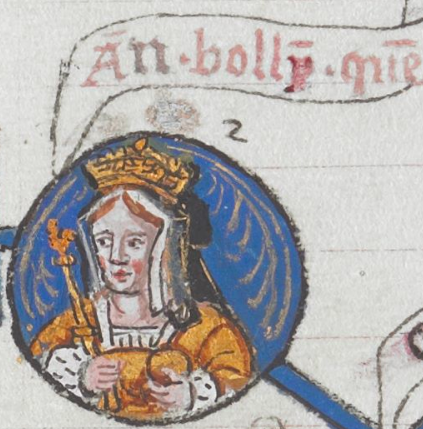
Whilst those of you who have read my three part series on Anne Boleyn and the gable hood will notice that once again Anne is in the English style hood, in this instance, it should not be seen as anything more than a stylistic choice on the part of the artist. Apart from Eve, who is bare-headed, and the early biblical women, who seem to be wearing something akin to a wimple, all the women throughout this genealogy are shown with the gable hood, even in much much earlier centuries before it had been invented. This was probably done to reflect the style of Katherine of Aragon, then the honoured and beloved wife of the King. The second artist chose to continue this stylistic choice for all the women they added, despite their individual style preferences – Catherine Howard and Catherine Parr were known to favour the French hood, and perhaps also Anne of Cleves if Franny Moyle’s identification of a miniature portrait is correct. Anne Boleyn’s depiction in the gable hood is likewise a continuation of the earlier style. Furthermore, the miniature faces in this genealogy are clearly supposed to be symbolic rather than true to life representations, as all the added female faces are identical.
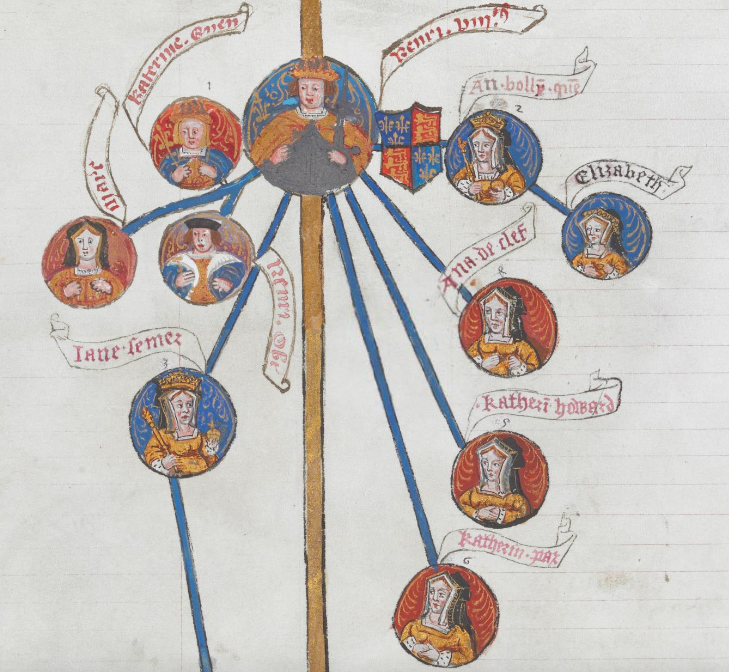
The second artist was working at some point during Edward’s reign, as Mary and Elizabeth appear merely as daughters of King Henry, and have not been given crowns to show that they were queens themselves. Whilst Edward is crowned as a king, his name does not have the letters obit following his name, indicating he was alive at the time of creation. This dates the additions to some point between February, 1547, and July, 1553.
In fact, I find Edward’s entry rather sad. The artist started a new page for Edward, rather than showing him alongside his family. Clearly, the artist was anticipating adding a wife (or two, given whose son he was) and many children. Instead, Edward died at the tender age of 15, before he had the chance to marry or have children of his own.
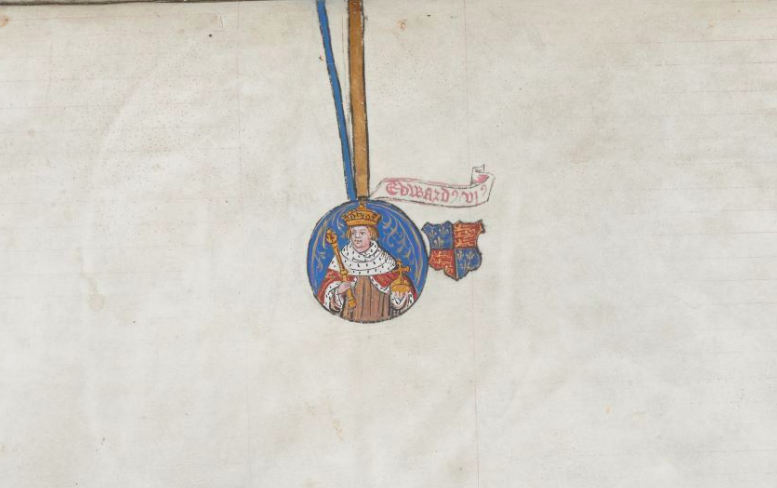
We can only speculate the reason no one continued the genealogy after Edward’s death. Perhaps it was merely forgotten. Perhaps the prominence given to Anne Boleyn made it safer to just not mention it during Mary’s reign. Perhaps during the reigns of both his daughters, no one knew how to safely summarise the marital and religious turbulence of Henry’s reign – though the images continue to Edward VI’s reign, the written history ends with Richard III.
Alongside the illustrations of each person named in the genealogy, there are many other beautiful illuminations throughout this manuscript, including a T-map of the world, the Ark of the Covenant, cross-sections of Noah’s Ark, and a plan of Jerusalem. You can peruse the manuscript for yourself through the British Library Digital Viewer.


